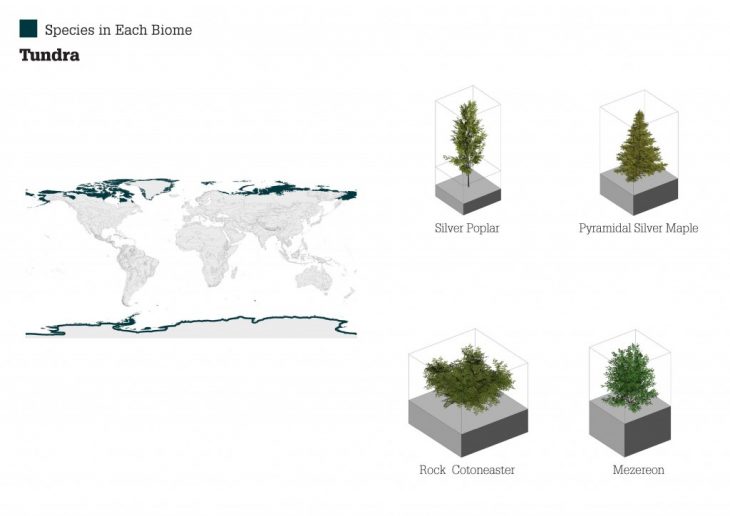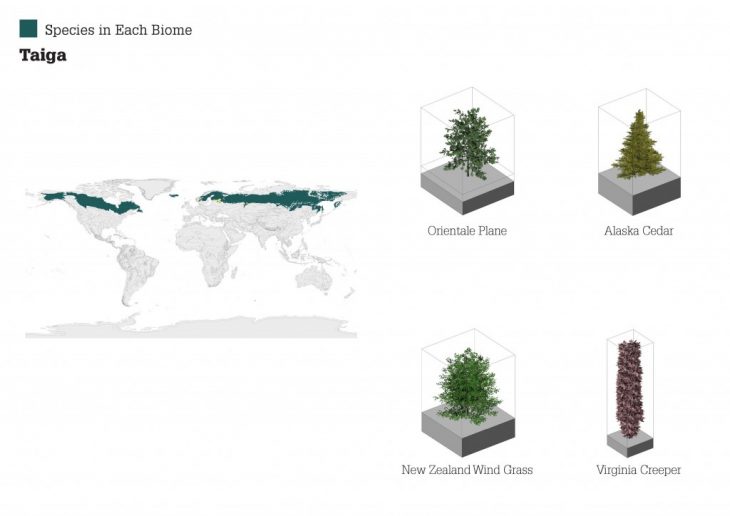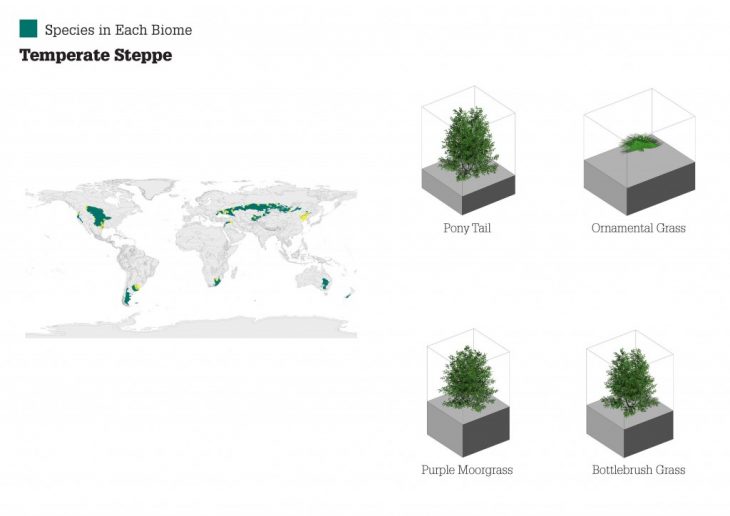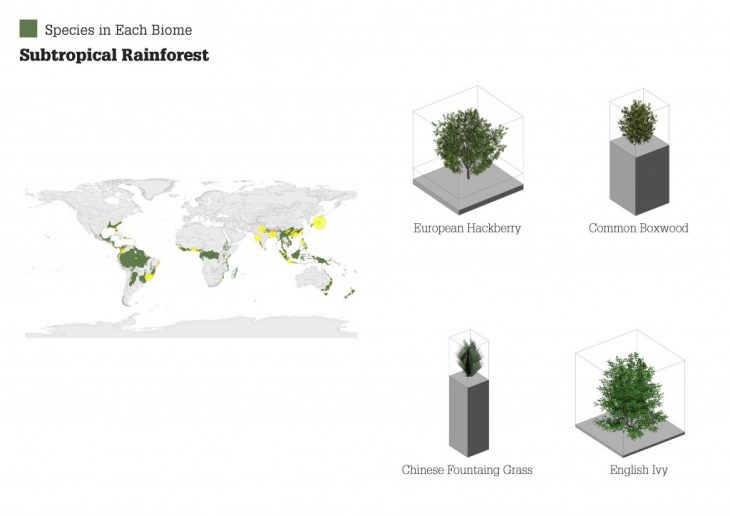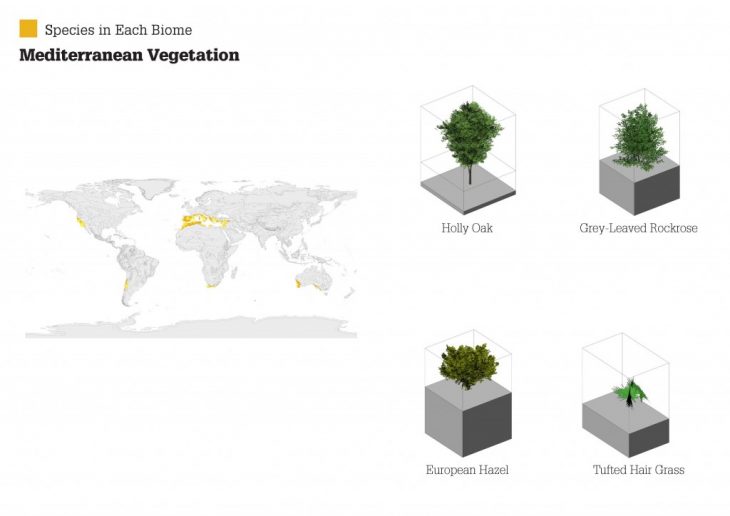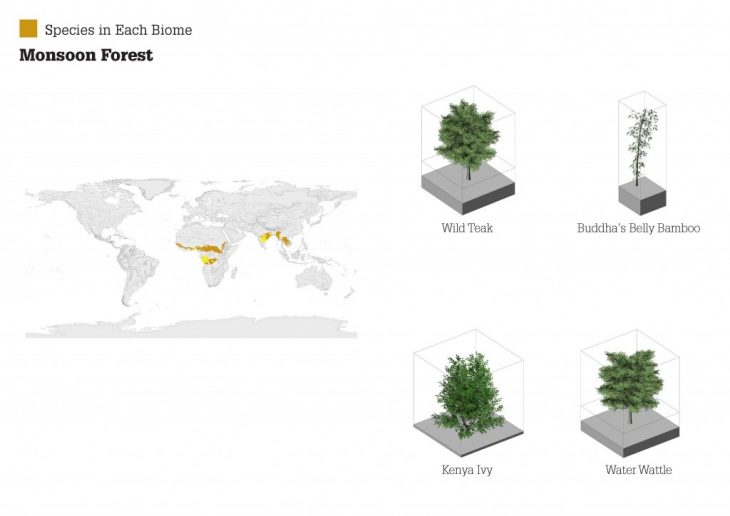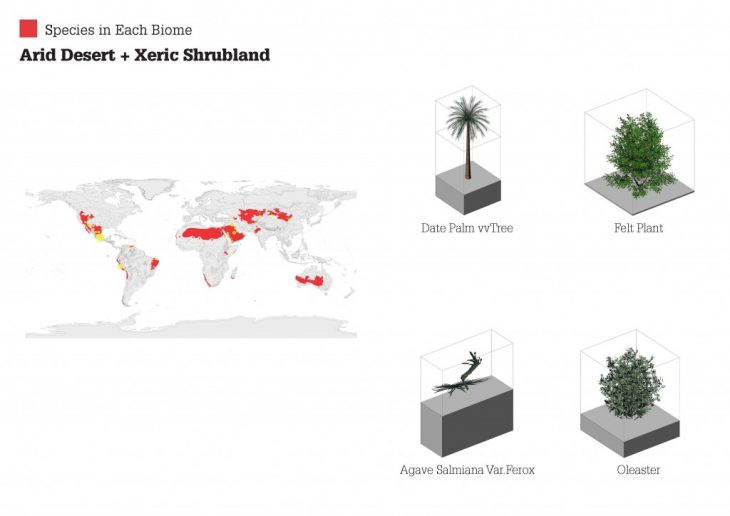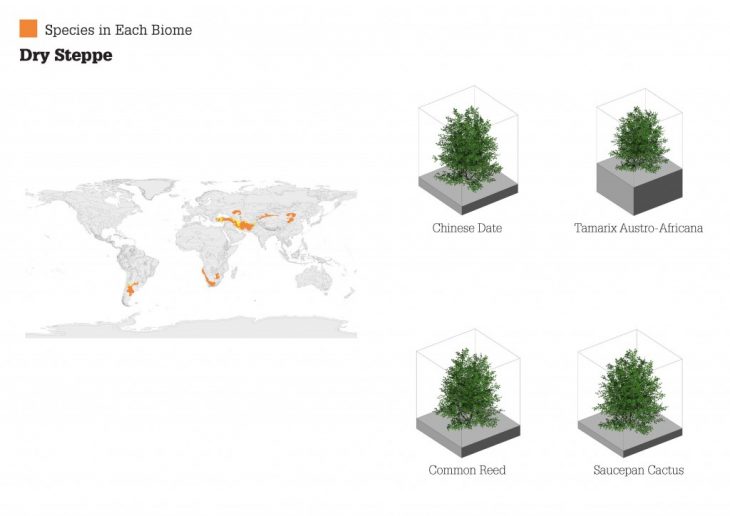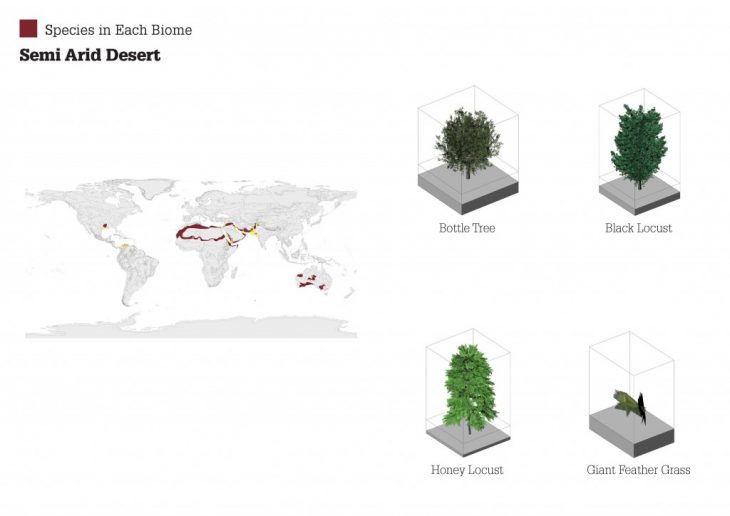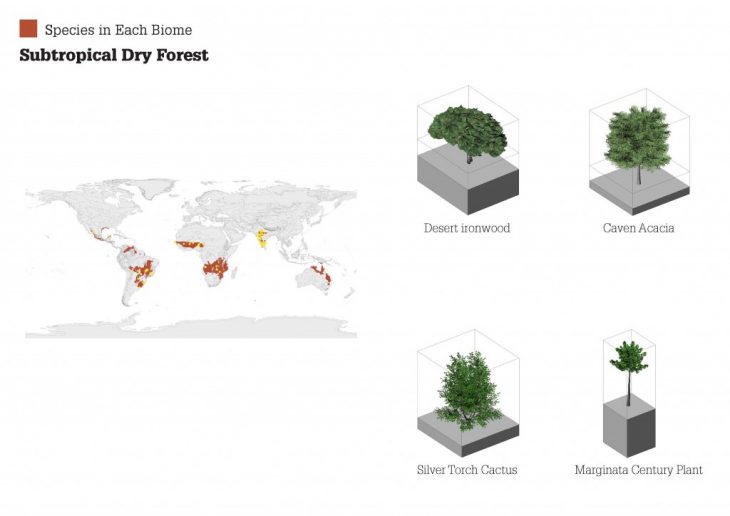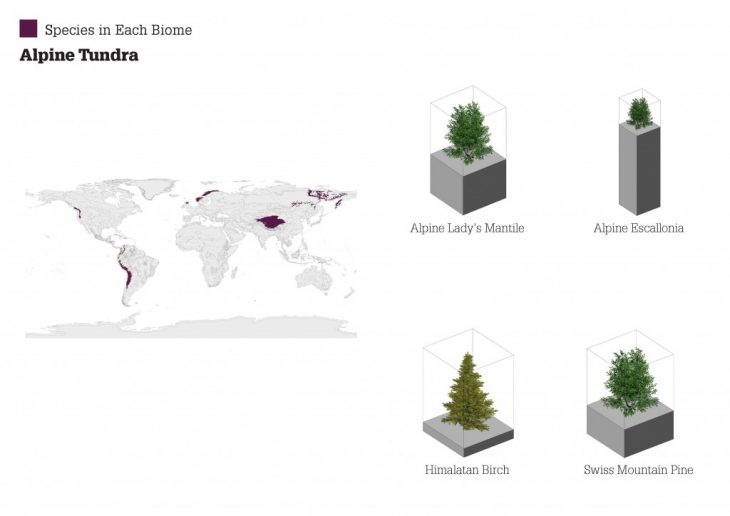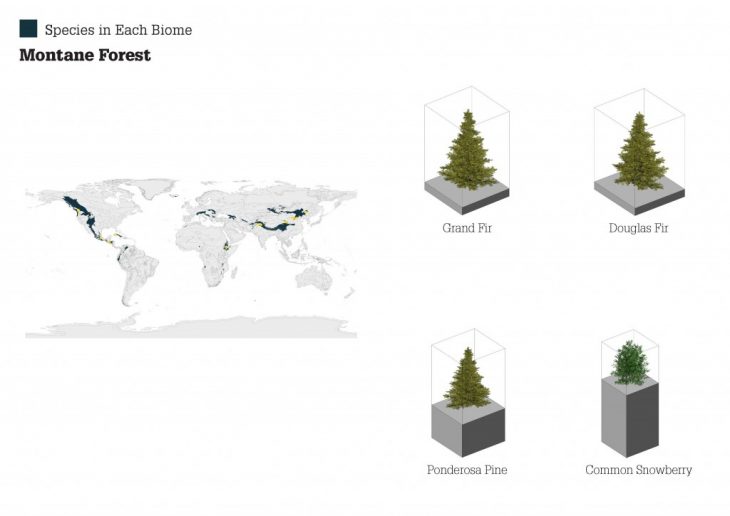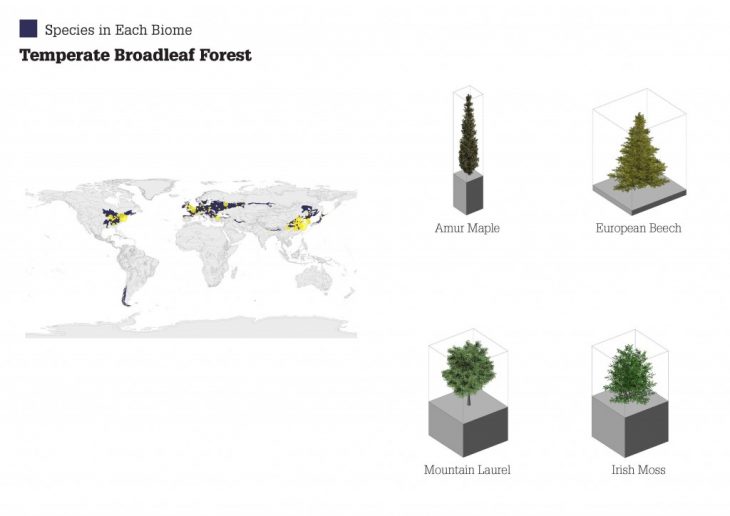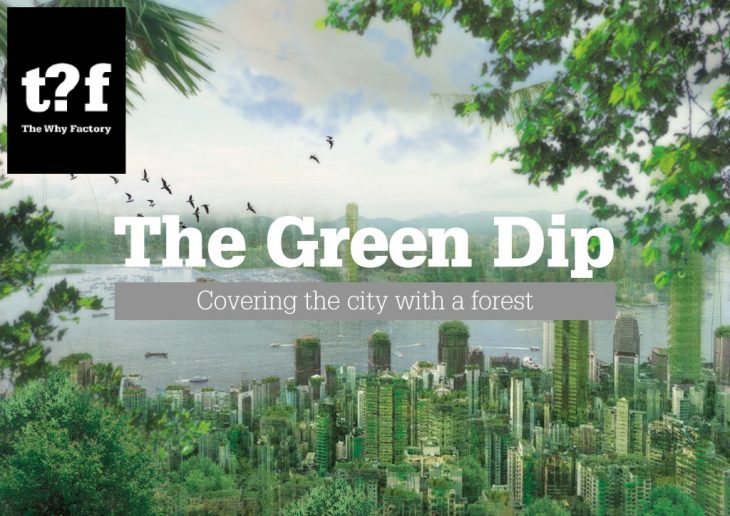
Introduction
In the last decade, sustainability has becomes a buzz word in all fields. But most specifically in the building arts. With this, we have seen the emergence of green washing- the practice of making an unsubstantiated or misleading claim about the environmental benefits of a product, service, technology or company practice. We know that green has the capacity to increases biodiversity, help cool cities and help with water related issues etc. However, is this quantifiable? Will an all green city solve the issues related to climate change and pollution? In this study, we want to explore the pros and cons of this controversy by quantifying these assumptions.
Part 1: Biome and tree classification
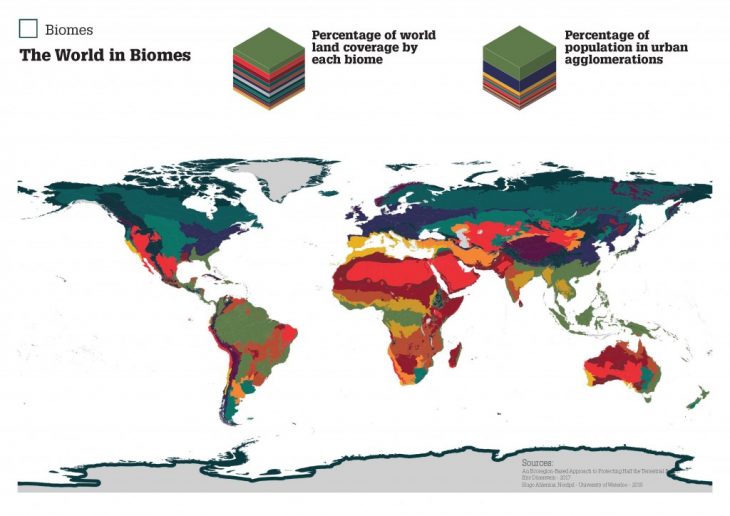
The first step was to classify the world in 14 biomes. We then selected four of the most representative species per biomes analysing their properties and ecosystem services.Leading to a catalogue of 58 plants.
Part 2: Biophysical Ecosystem Services
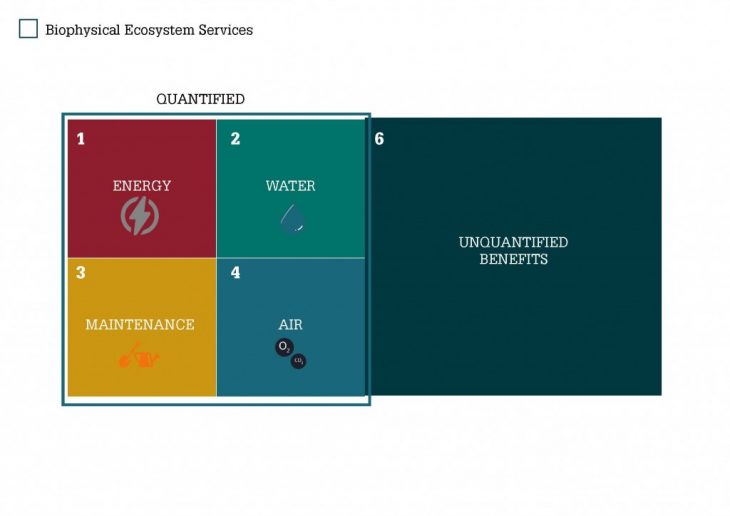
We then proceeded to do a mapping of all biophysical ecosystem services, selecting a set that we sought to quantify:
- Plant water consumption
- Soil retention
- Energy saving from cooling effect by plants
- Particulate matter absorption by plants
- Carbon dioxide absorption by plants
- Oxygen absorption by plants
- Energy savings from cooling
- Energy saving by insulation using plants
- Renewable Energy provided by plant biomass
- Maintenance cost
And others that could be quantified but remained unquantified for the purpose of this research.
- Noise reduction, health benefits, psychological benefits and social benefits
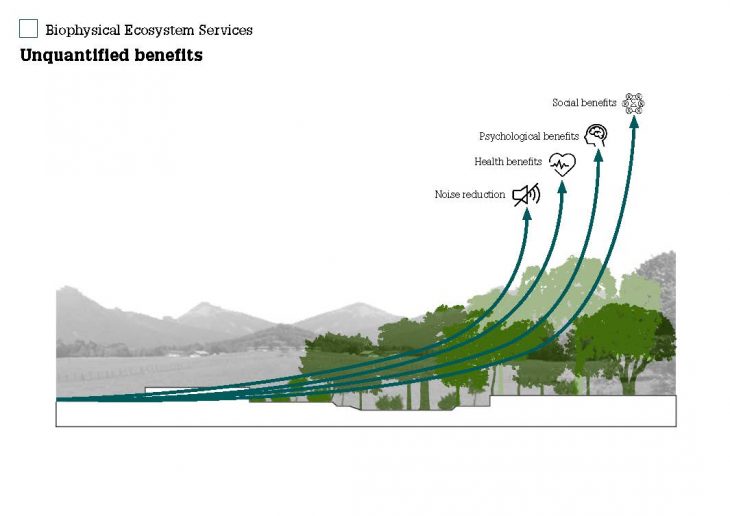
Part 3: Sorting
First, we sorted the 58 plants from best to worst per biophysical ecosystem service in order to determine the best plants around the world. Since it is inefficient to plant a species non-indigenous to its biome, we sorted the plants per biome based on their biophysical ecosystem.
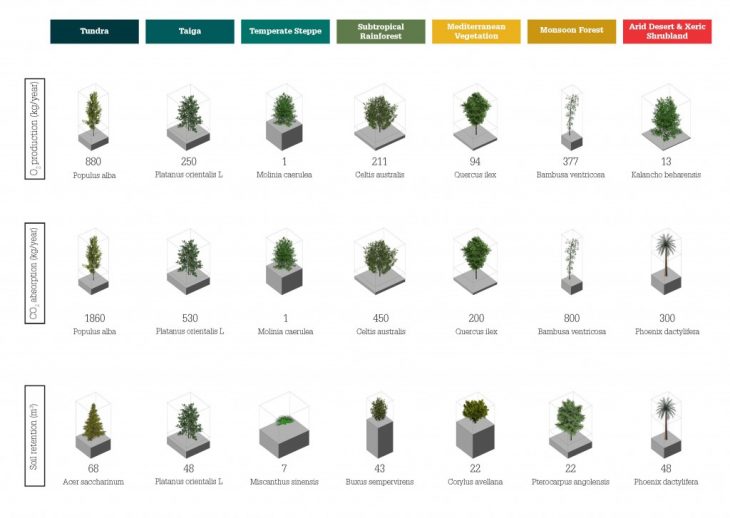

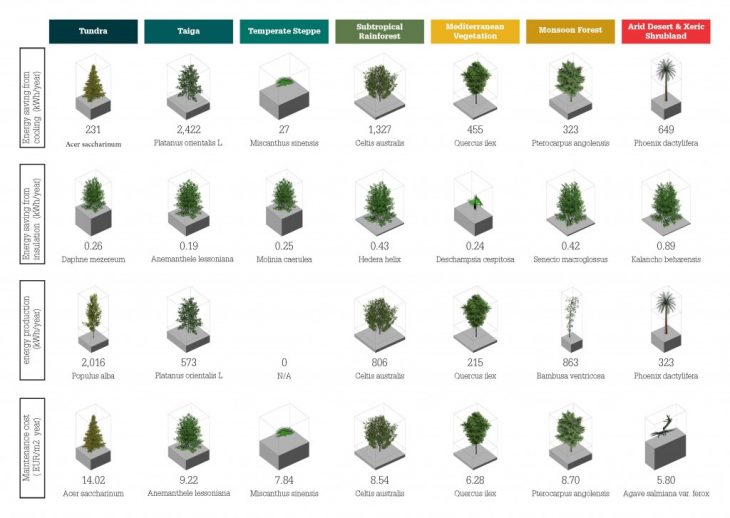

Part 4: Typology
Eight cities with eight different typologies were selected to show the effects from covering roofs, terraces, balconies and even walls and facades with plants. These 8 cities cover 6 biomes.
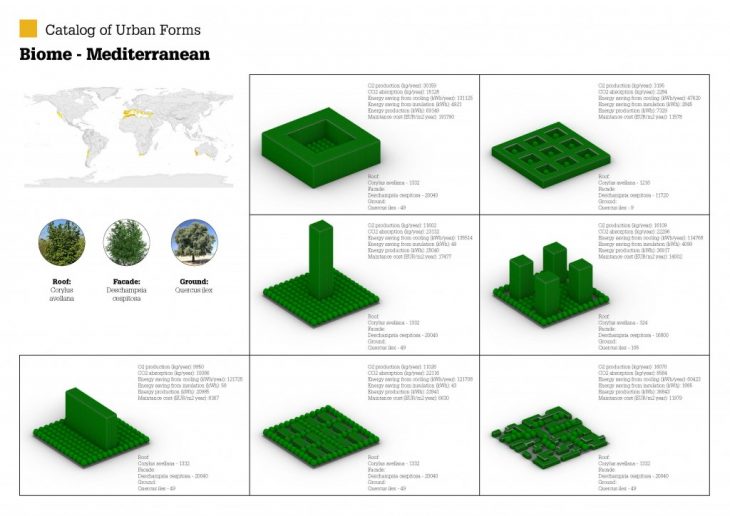
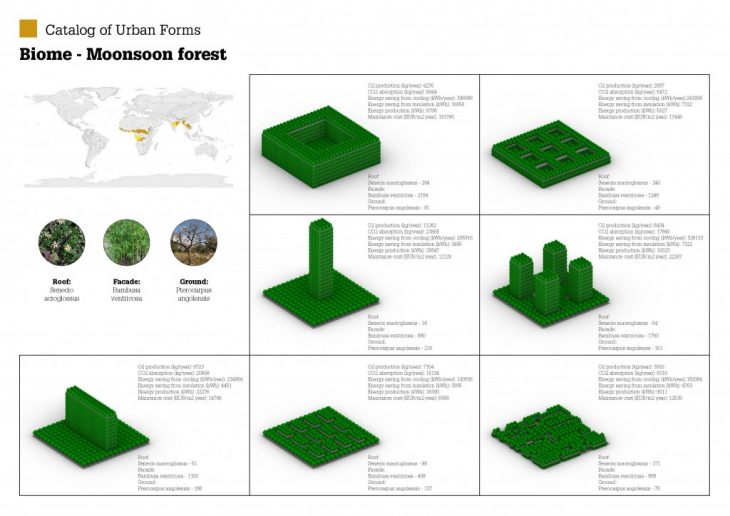
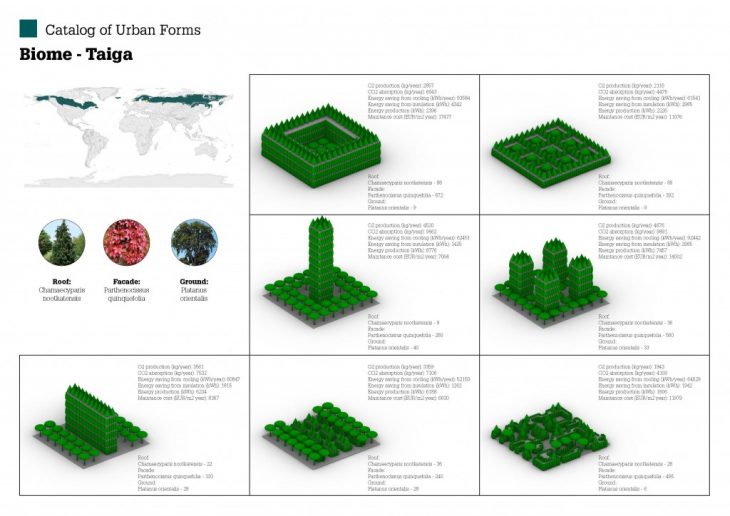
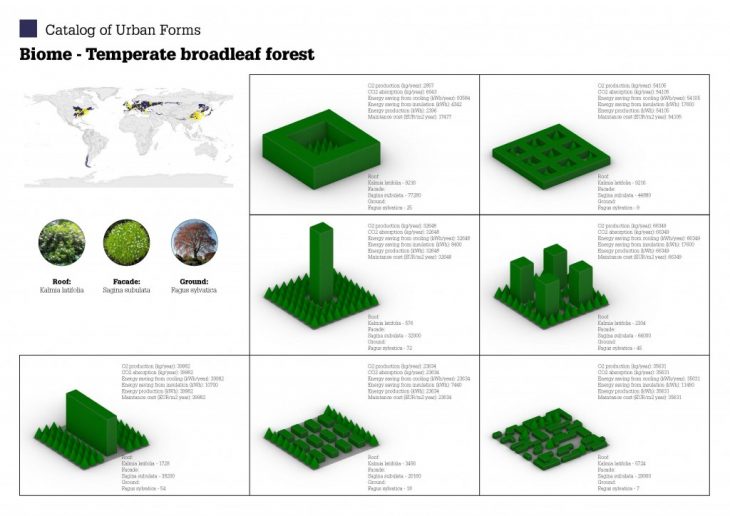
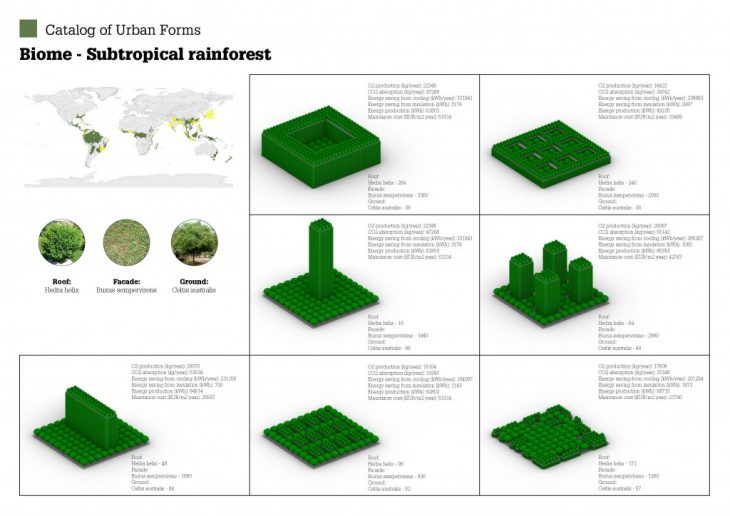
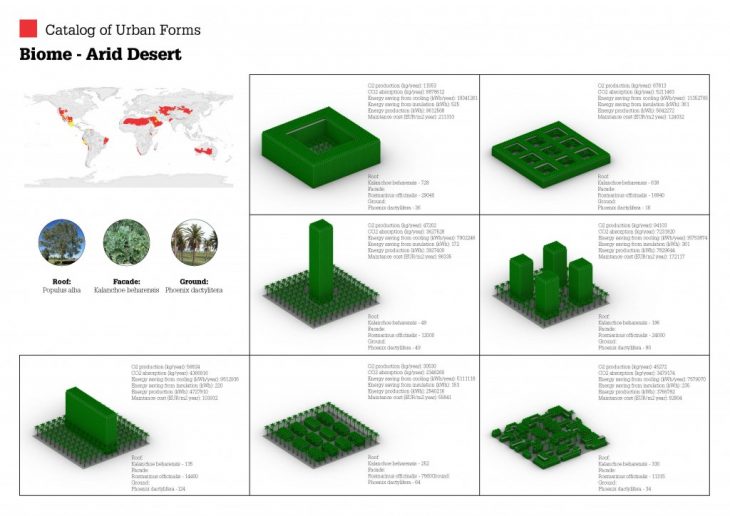
In the end, we visualized what these cities would look like in 2 scales birds eye view, small street view with representative element of the city
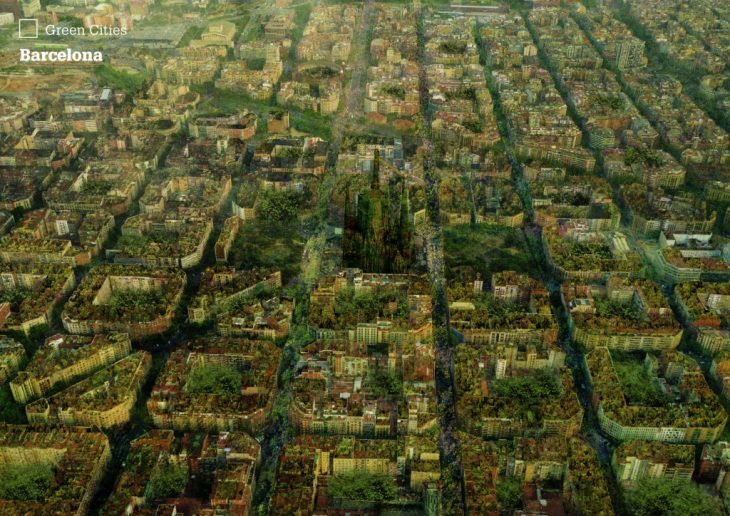
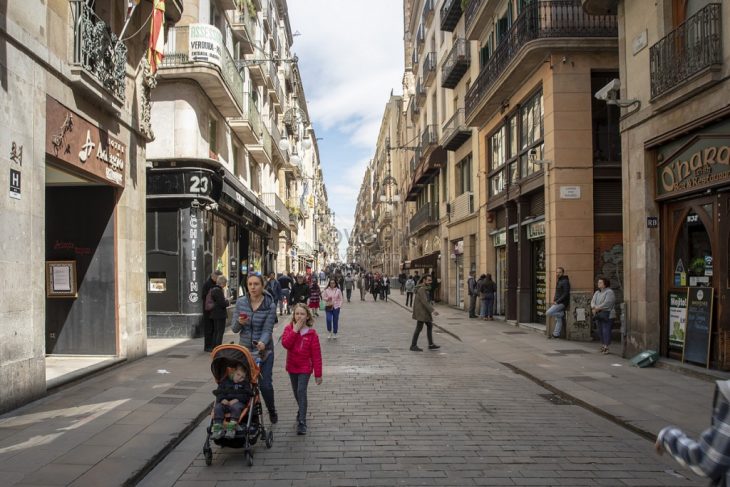
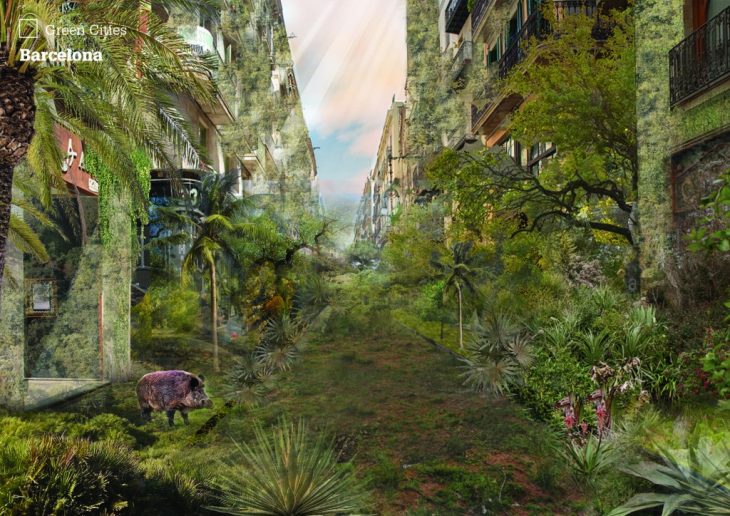
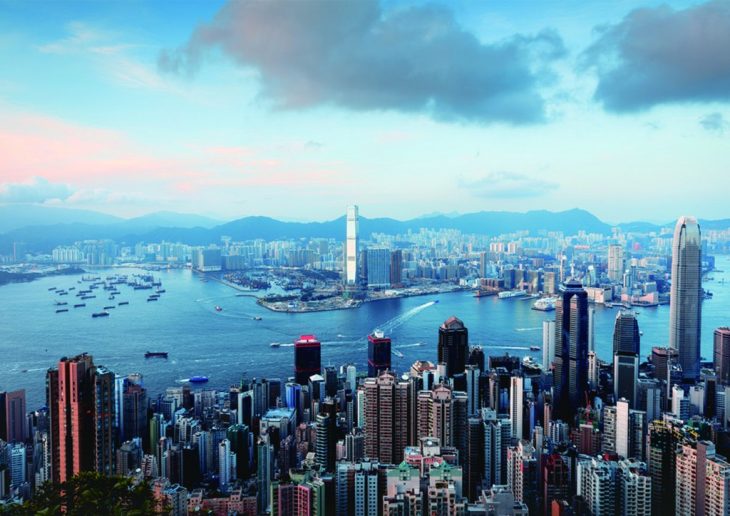
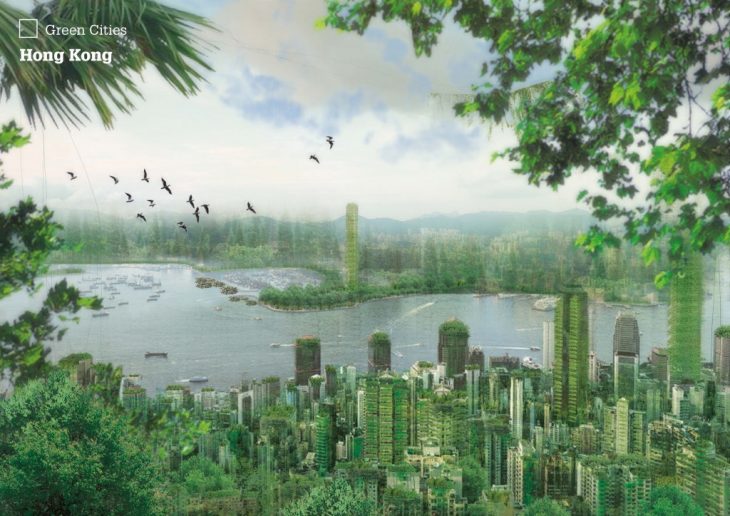
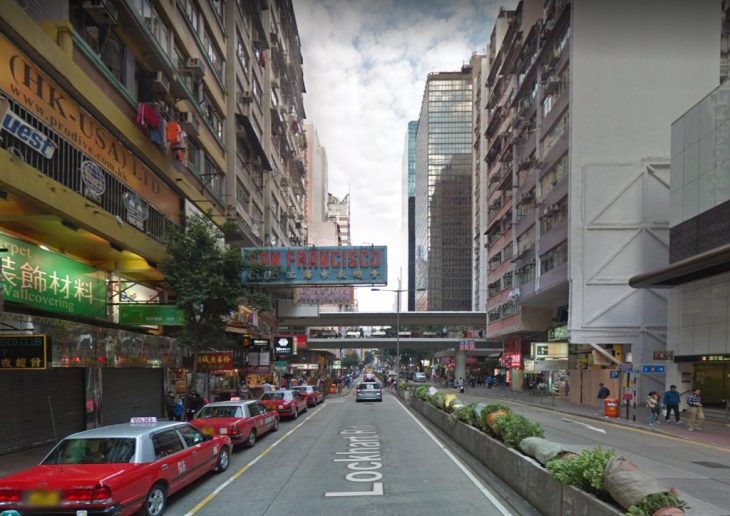
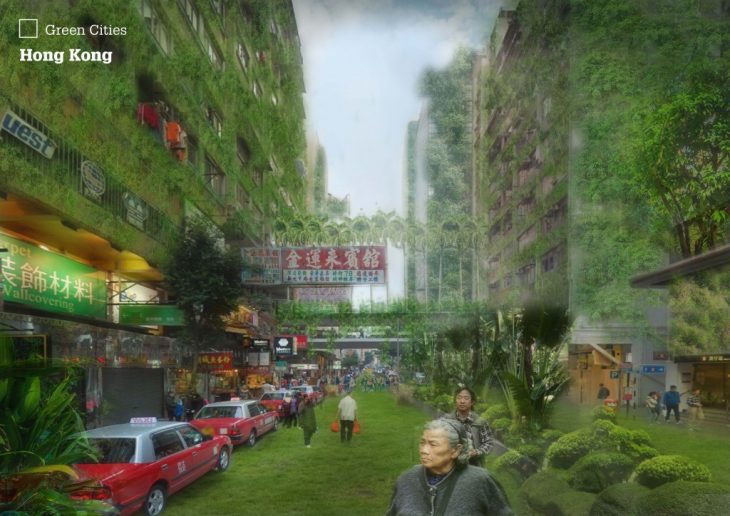
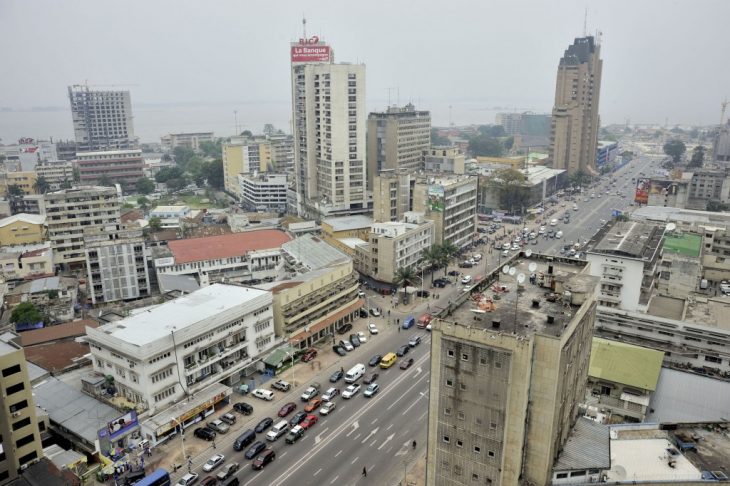
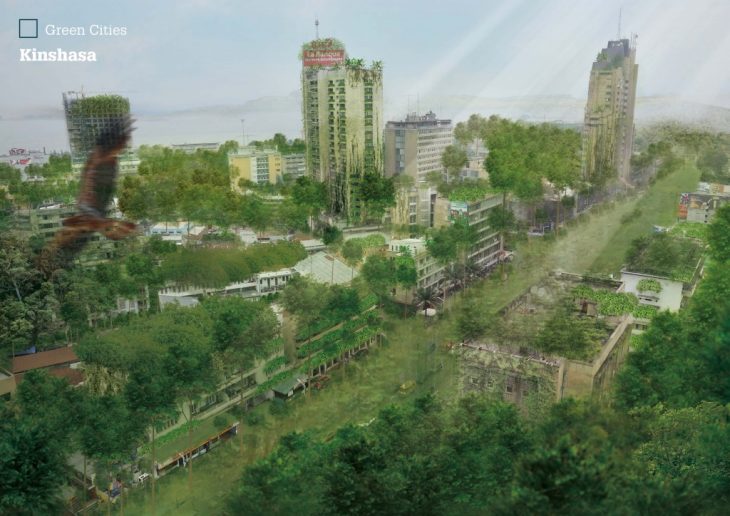
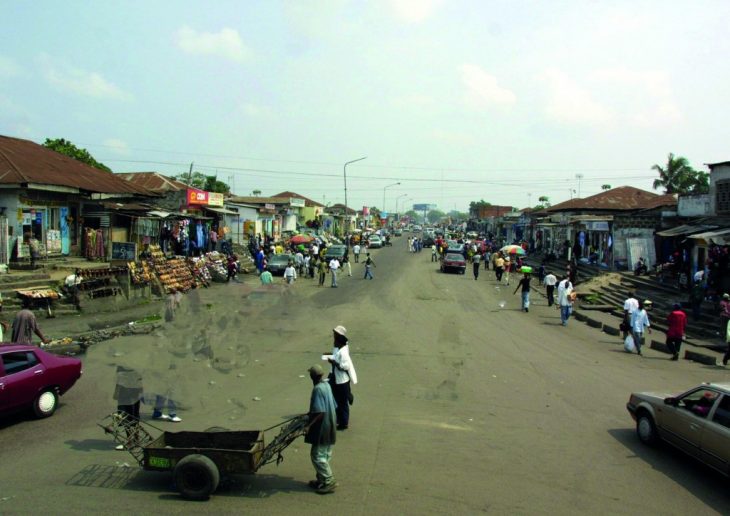
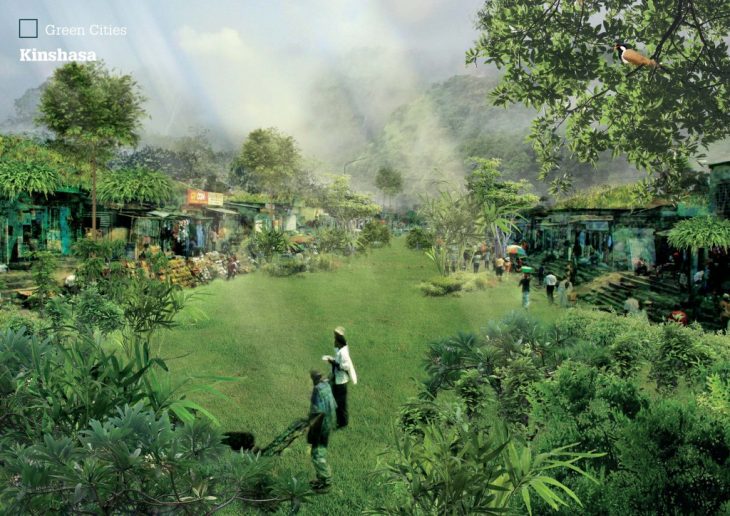
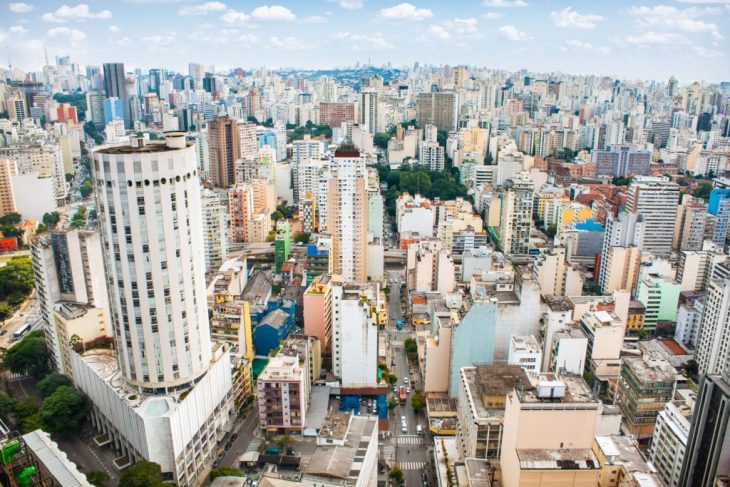
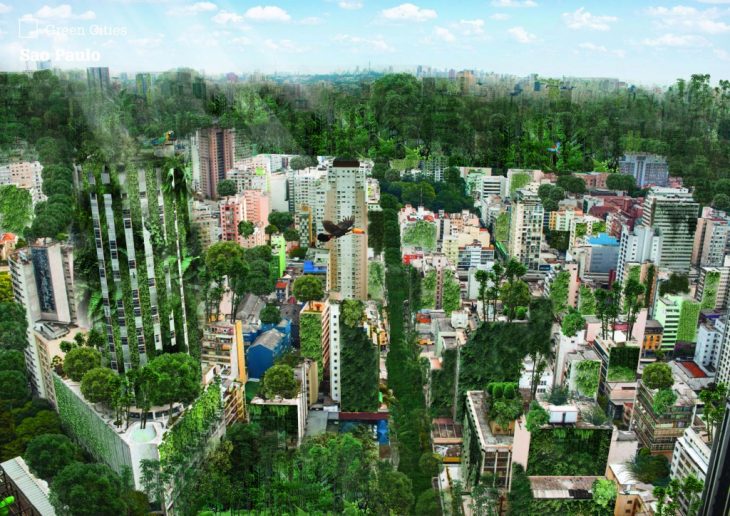
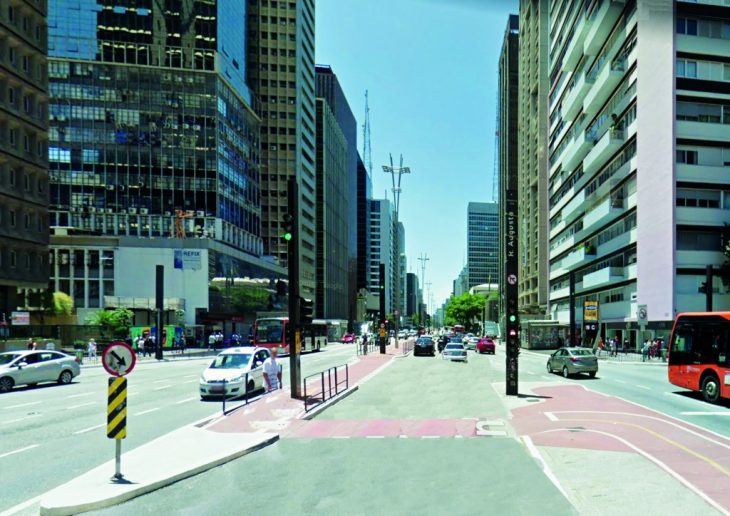
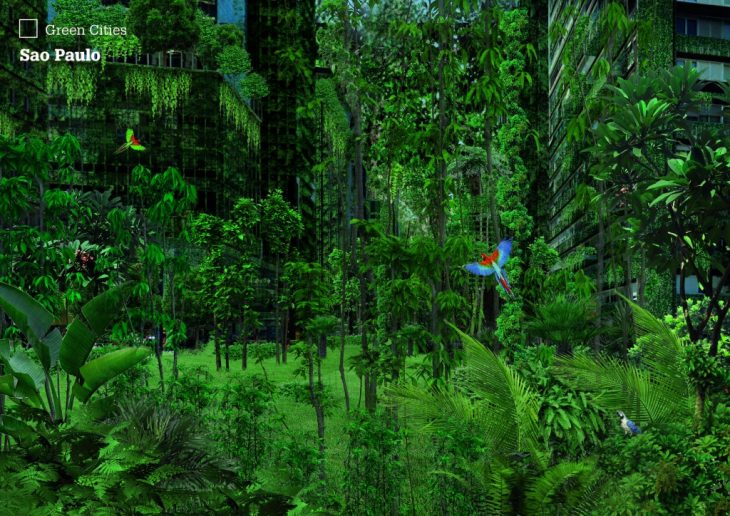
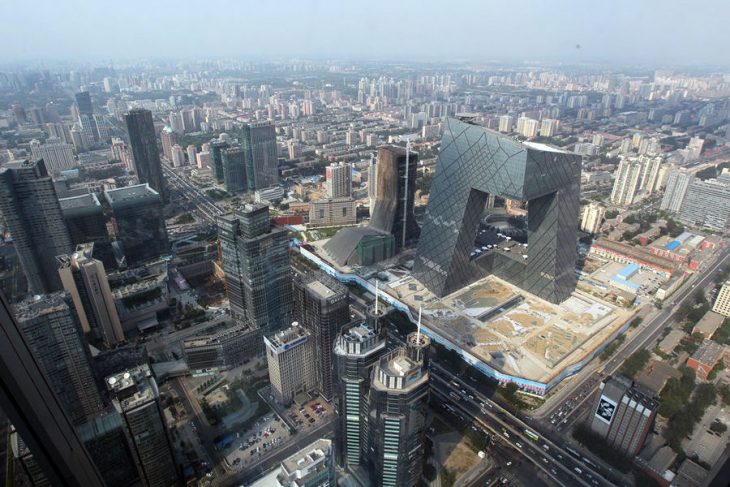
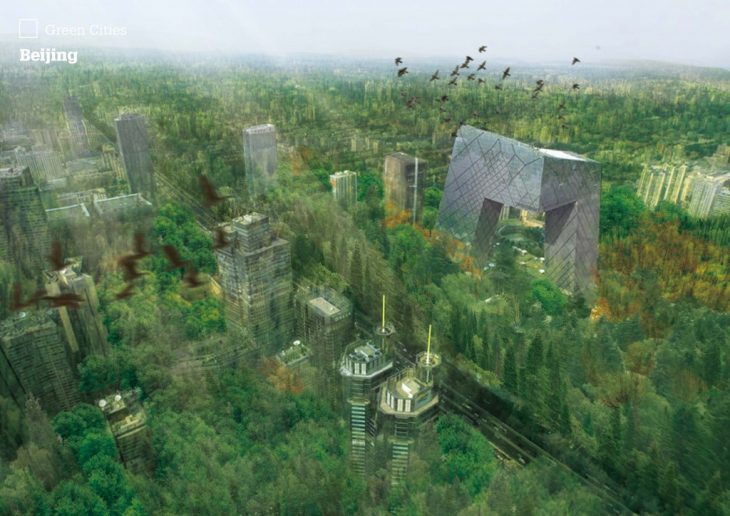
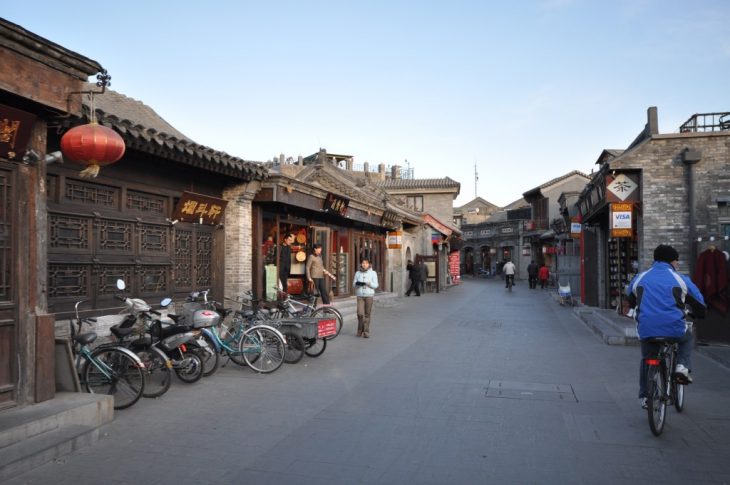
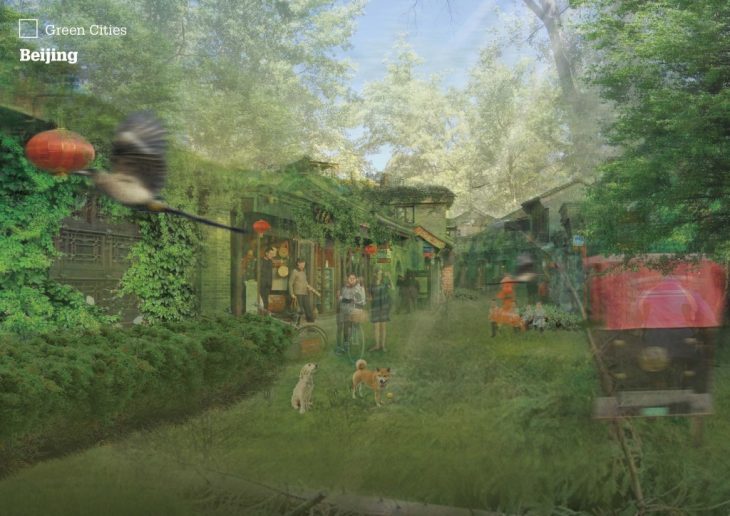

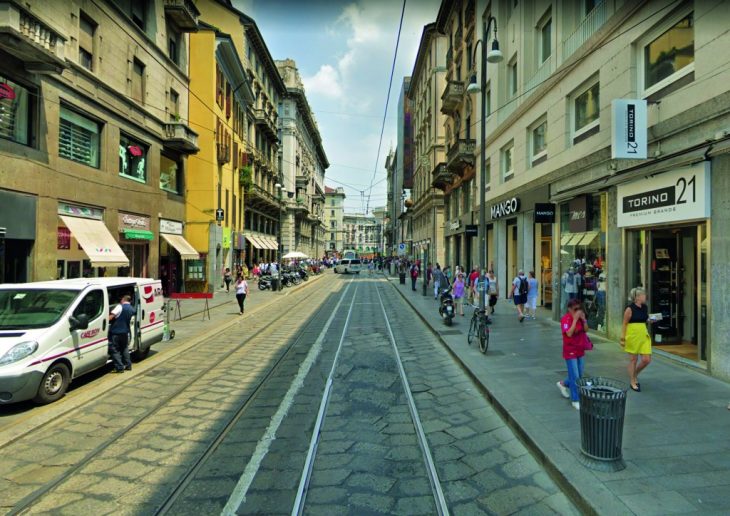
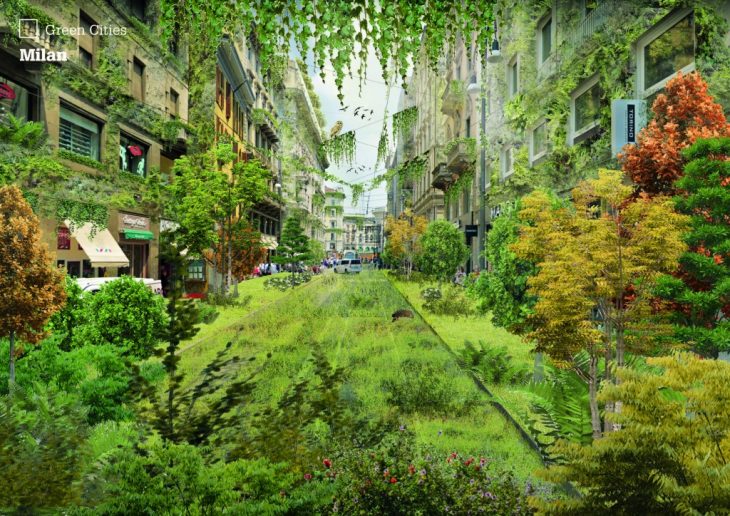
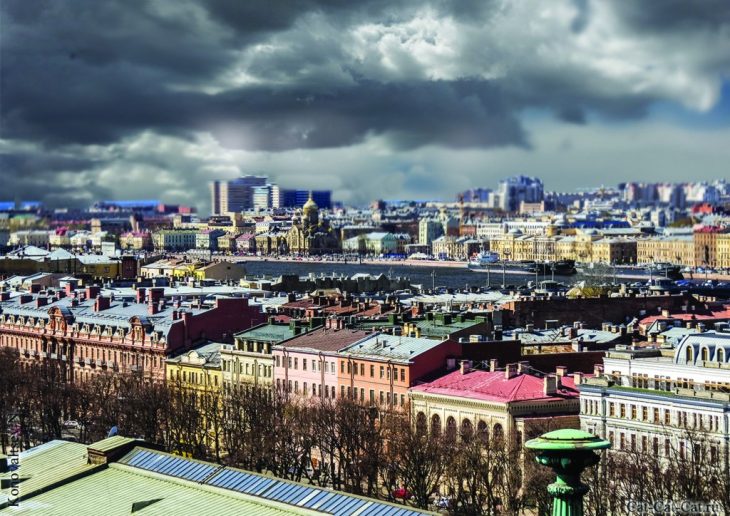
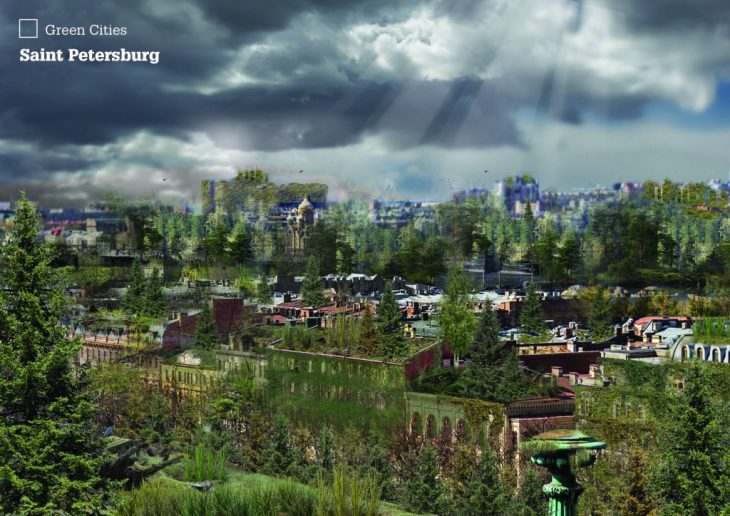
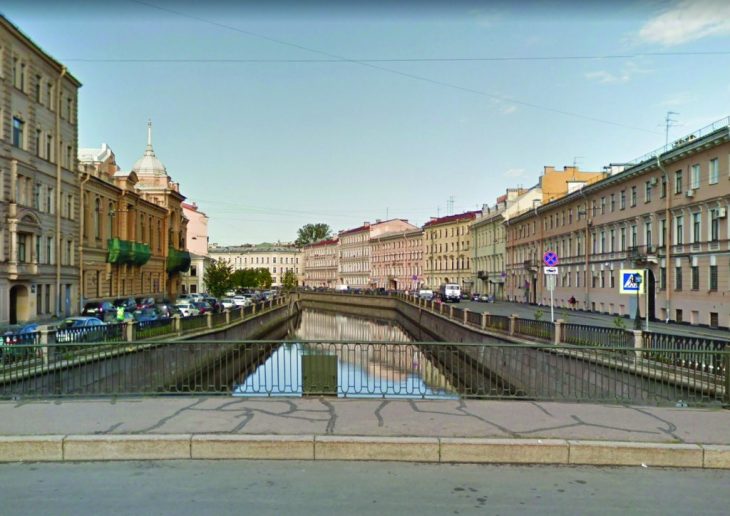
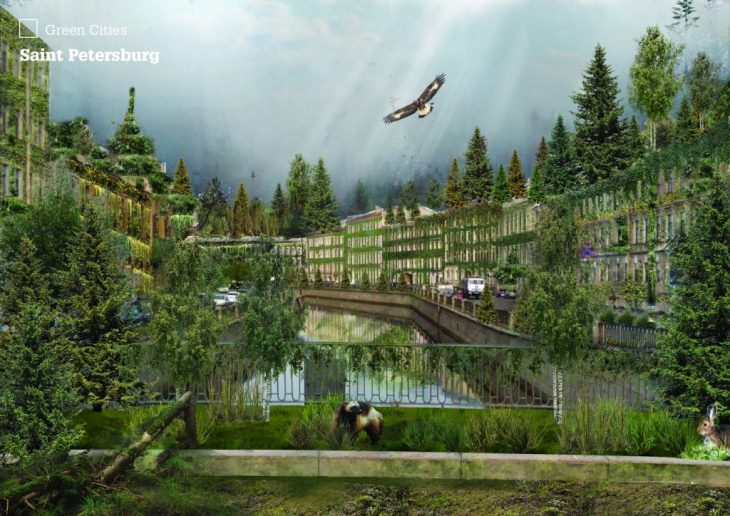
THE GREEN DIP is a project of THE WHY FACTORY WORKSHOP of IaaC, Institute for Advanced Architecture of Catalonia developed at Master in City and Technology in (2018/2019) by:
